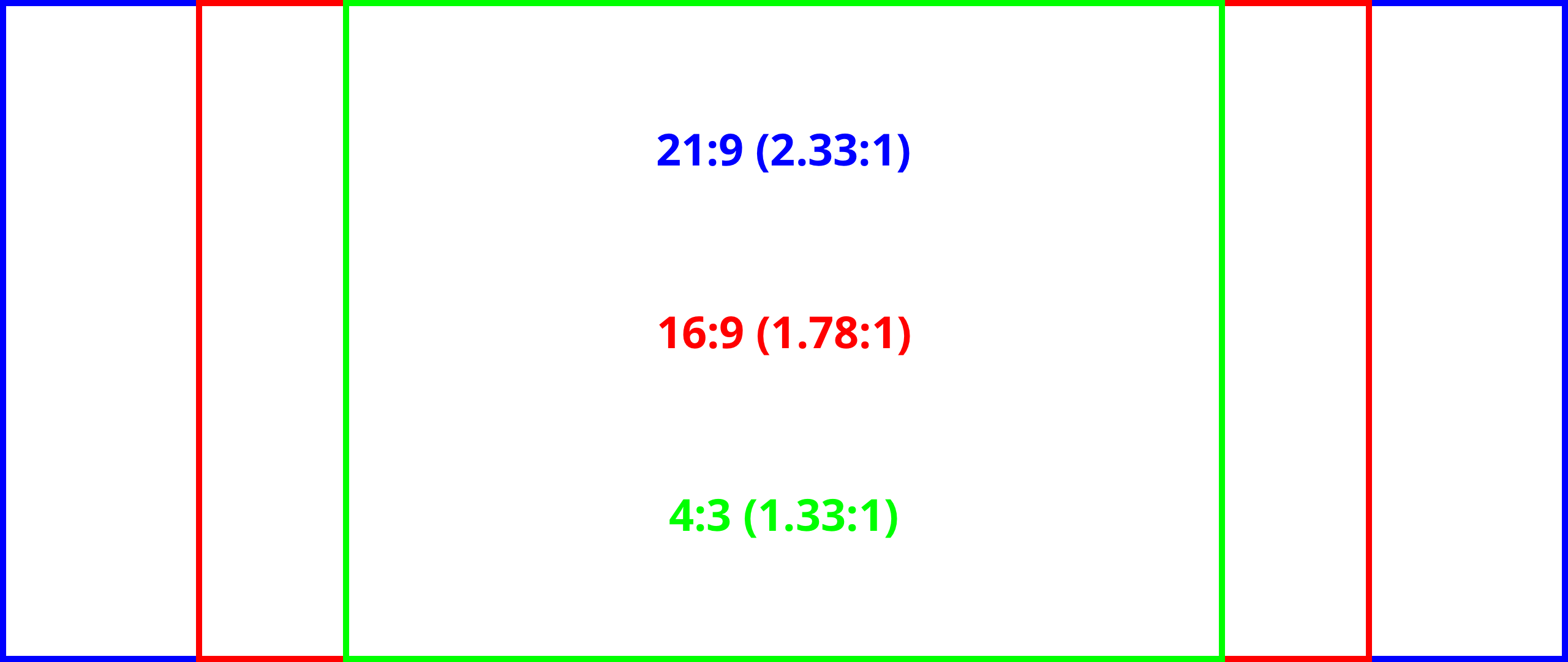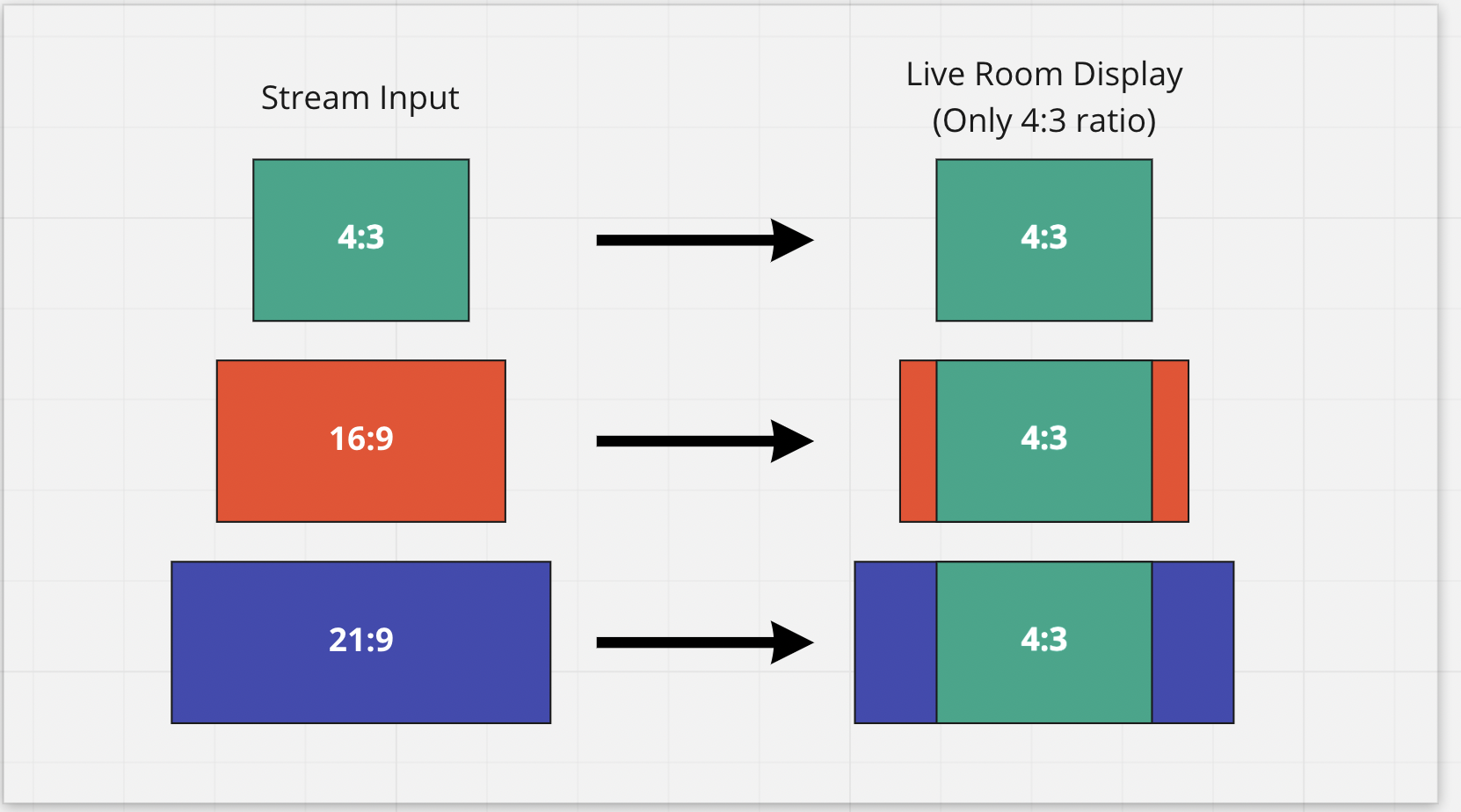Note: This article contains information related to the old Livescale experience, which has been deprecated, and it may no longer be applicable.
What is aspect ratio?
The aspect ratio of an image is the ratio of its width to its height, and is expressed with two numbers separated by a colon, such as 16:9, which would be read as "sixteen-to-nine".
Livescale's aspect ratio
The Livescale viewer experience is designed for a 4:3 aspect ratio in landscape mode.
What does this mean? The view for viewers in the live experience will have a 4:3 display, no matter the aspect ratio selected within your streaming software.
In other words, a stream with a 16:9 aspect ratio can be sent to Livescale and it will display 4:3 in the Live Room.
Note: The recording will have the input aspect ratio, so 16:9 in this case.
Here is a sample image you may use to help you have a visual of what all 3 different aspect ratios will look like when turning on your camera:

If your streaming input is 16:9 or 21:9, our video engine will convert the video into a 4:3 ratio in the live room:

Common aspect ratios
There are a lot of aspect ratios in common use today because each aspect ratio has a specific use. Here are some of the most common:
- 1:1 - This is simply a square, and it is commonly used in images on social media.
- 3:2 - This is a common size for sensors found in cameras and phones for shooting still images and video.
- 4:3 - This was the aspect ratio used by broadcast television until the age of high definition.
- 16:9 - This has become the standard aspect ratio for computer displays and cinema, though there are many exceptions to the rule.
- 2.35:1 - This extra-wide aspect ratio is known as Cinemascope, and it is often used to make films for cinema.
